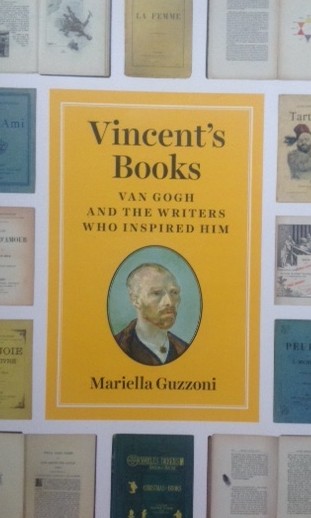Inspiring Older Readers
 posted on 22 Sep 2020
posted on 22 Sep 2020
Vincent's Books: Van Gogh and the Writers Who Inspired Him by Mariella Guzzoni
In those heady pre-Covid days when we were footloose and fancy free, there was nothing I enjoyed more than trips to museums and art galleries to hunt out all those fabulous paintings that depicted people with books, books as still lifes or even books as coincidental scene dressing. You’d be surprised just how many great painters from across the whole history of art have found the book to be an indispensible subject for their painting.
Vincent Van Gogh was no exception to this but, as Mariella Guzzoni’s book documents with conviction and intimidating thoroughness, Vincent didn’t just want to make books the subject of his art – he also wanted to read them. What we discover from the very outset is that Van Gogh considered the art of the writer to be as noble and creative as that of the painter and sculptor.
Guzzoni’s scholarship has a very solid and substantial foundation provided by Van Gogh himself. Vincent spent a lot of time writing to his brother Theo and the hundreds of letters that have survived detail his day to day thoughts and his reading enthusiasms which the book’s author has been able to plunder to great effect.
It’s important to say that Van Gogh was no book collector – volumes passed through his hands for reading purposes and not for accumulation and it was the content that interested him rather than the object. Writing on the Hyperallergic website, Michael Glover puts it this way:
“He reverenced books for their intellectual and emotional content. He didn’t collect old books in the way that he collected, say, prints. He was no slow-moving antiquarian. His hands were probably never clean enough to be trusted with the handling of fine editions.”
Van Gogh could never, it seems, be accused of going for a light, easy read. He had his favourites and they were pretty heavyweight authors – Zola, Carlyle, Flaubert, Balzac, Maupassant and, above all, Dickens. Michael Glover notes that:
“Dickens was one of his especial favourites. He read and then reread his books, examining not only the words, but the illustrations too, because Dickens’s novels, published as they were in weekly instalments, were always dramatically enhanced by pictures, often mawkish cliffhangers. Vincent learned a lot from the different ways in which stories and novels — in fact, texts in general — were illustrated, including useful lessons in the art of portraiture.”
What this highlights quite rightly is that for Van Gogh reading and painting were symbiotic. His reading informed his painting and he chose his literature in a way that enhanced the themes he was exploring in his art.
Having said all this I feel like I really don’t have much more to say – and that may be the book’s Achilles heel. It’s hard to escape the feeling that what we have here isn’t much more than an interesting long essay that has been stretched out into a book by the judicious use of illustration and the reproduction of paintings and artworks that you often feel are interesting but not essential to the core text.
I’m not suggesting that this is some kind of deal-breaker or fatal flaw when it comes to enjoying the book but if you want to read it you should approach the book with this in mind – the central premise is interesting but not especially complex and what you’ll also need to buy into are all the peripheral details and examples that give the final volume its heft.
Terry Potter
September 2020